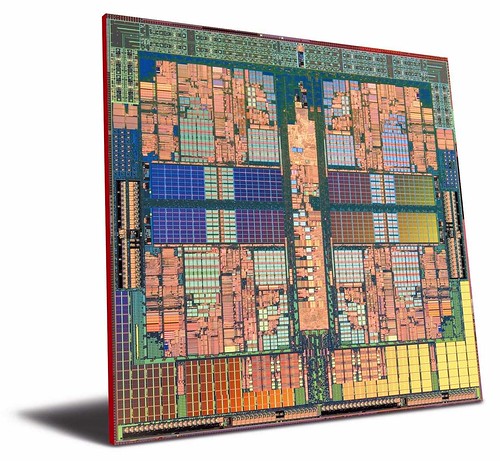
AMD felt that the new core architecture needed a new name, and what better name to give it than the Phenom. Short for phenomenal, AMD chose the name to convey the perception that buying the processor will allow the user to experience a phenomenal level of performance. The new Phenom processors will be available in three variants :
- AMD Phenom FX
- highest-end quad-core Phenom processor
- has dual-processor capability for 8-cores on a single motherboard
- targeted at workstation-grade or high-end PCs - AMD Phenom X4
- high-end quad-core Phenom processor
- targeted at high-end, enthusiast-grade PCs - AMD Phenom X2
- dual-core Phenom processor
- targeted at enthusiast-grade PCs
Socket Compatibility
All Phenom processors will support current Socket AM2 motherboards, as well as the newer Socket AM2+. According to AMD, the only difference between Socket AM2 and Socket AM2+ is the support for HyperTransport 3.0 which allows for a higher transfer rate of 20.8 GB/s at 2.6 GHz.
Current Socket AM2 users will have no problem replacing their Athlon (64) X2 processors with the new Phenom processors. They will just need a BIOS update to recognize the new processors.
Lower Power Consumption
Like the Quad-Core Opteron (Barcelona) processors, all Phenom processors will be fabricated on the 65 nm process technology on SOI (Silicon On Insulator) substrates. This allows AMD to deliver thermal design power (TDP) levels at or below 65 W. This is about 24 W (27%) lower than that of current Athlon 64 X2 processors which are based on the 90 nm process technology.
After long time visited your blog...
ReplyDeleteits seems like a wiki ha.. keep it up buddy!!!